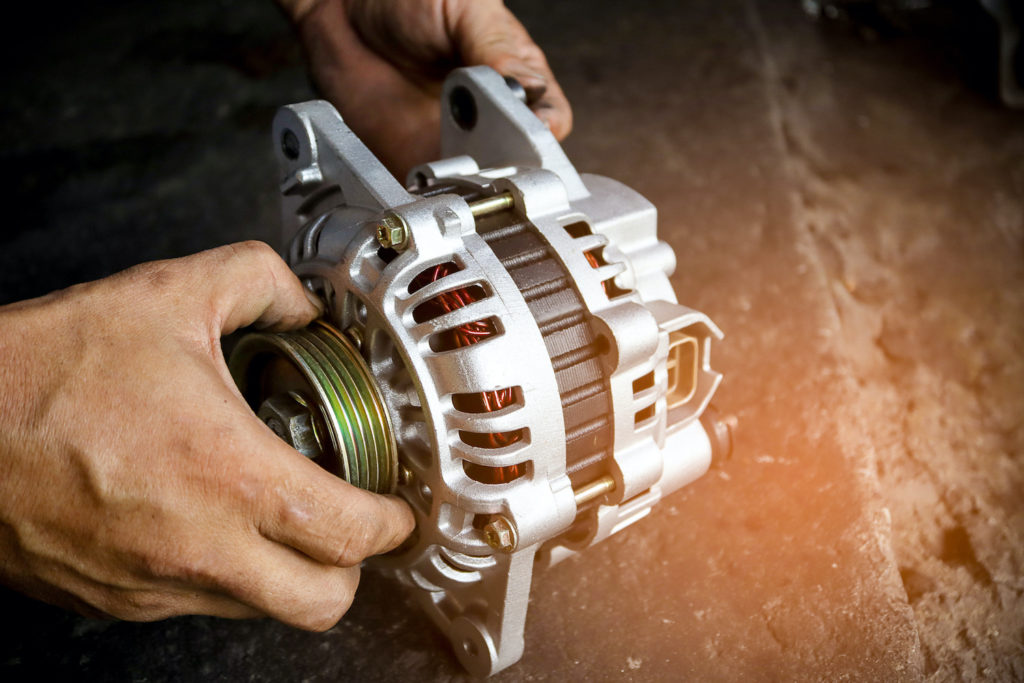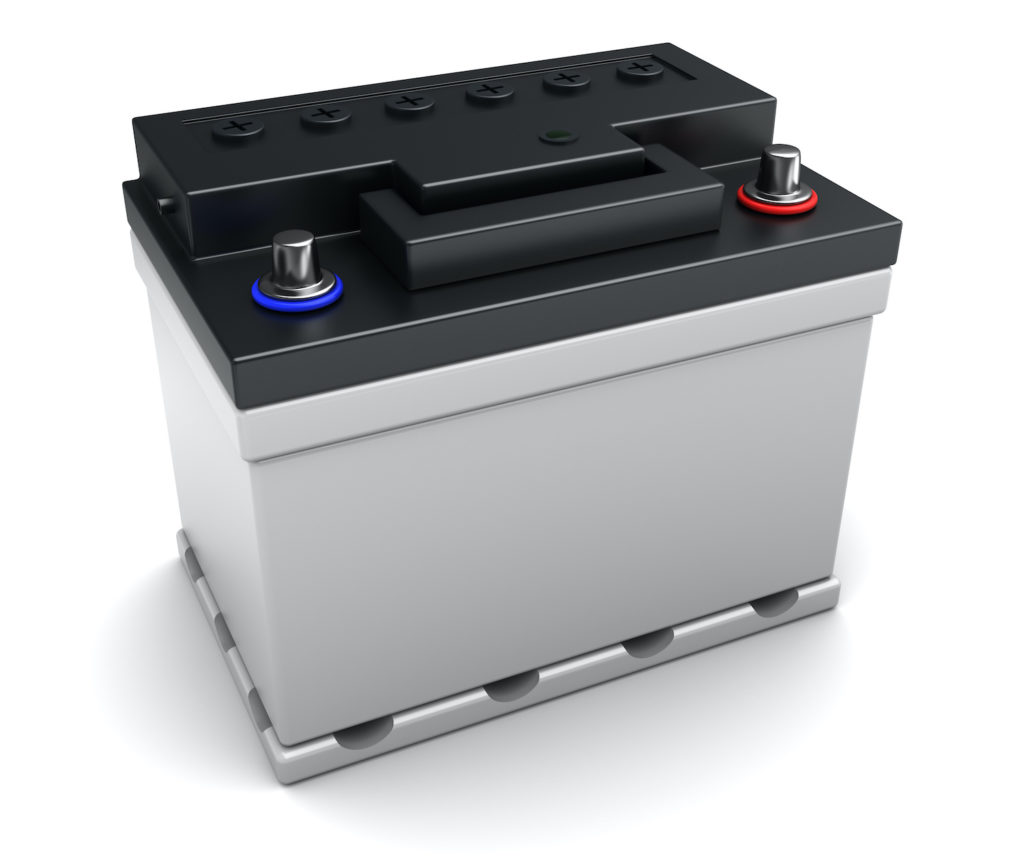When a car doesn’t start, many people wonder whether the alternator or the battery is to blame. Spoiler alert—when an engine either cranks sluggishly or doesn’t crank at all, the issue is usually the battery. But that doesn’t mean the alternator isn’t occasionally to blame for the battery going dead in the first place.
Are you confused yet? Let’s clarify.
Alternator or Battery: What’s the Difference?
First, we need to know the difference between the alternator and the battery. The alternator is an engine-driven device that converts mechanical energy into electrical energy. When the engine is running, the alternator charges the battery, while also powering your car’s electrical system.

The battery, on the other hand, supplies electrical energy to your car when the engine is off. Also, the battery provides the current needed to energize the starter, which then cranks the engine to get it running.
Once everything is in motion, the alternator takes over supplying power to the car’s onboard electronics.
Knowing the difference between the symptoms of a bad battery and a bad alternator can help you decide which one your car may need. Car batteries last from three to seven years if maintained properly. An alternator, meanwhile, is designed to last the life of your vehicle, though that doesn’t always happen.
Let’s take a look at some of the common signs of a bad alternator and a bad battery.

Signs of a Bad Car Battery vs. Alternator
Because the battery and the alternator are both part of your car’s charging system, figuring out which one is causing problems can be tricky. The first step is to pay attention to the symptoms your car is exhibiting.

What are the Signs of a Bad Battery?
Typically, the signs of a dead battery are easily recognizable. The most common symptoms include:
- Engine Doesn’t Crank or Start
- Engine Barely Turns Over
- Dimming Lights
- Engine Starts and Stays Running When Jumped
You can learn more by reading our article on signs of a bad battery.
What are the Signs of a Bad Alternator?
You’re far more likely to encounter a bad battery than a faulty alternator. Still, alternators do occasionally fail. If your alternator is bad, you might experience one or more of the following symptoms:
- Dim or Overly Bright Lights
- Discharged Battery
- Alternator Noise
- Electrical Issues
- Illuminated Charging System Warning Light
- Vehicle Stalls
To find out more, review our article on signs of a bad alternator.

Testing the Alternator and the Battery for an Answer
The best way to find out whether your car needs a new alternator or a new battery is to test both components. In some cases, both parts may be faulty, as a bad battery can reduce an alternator’s life expectancy and vice versa.
Most professionals use a carbon pile load tester or a digital battery/charging system analyzer to test the battery and the alternator. The problem is, most DIYers don’t have these tools—but they do have a digital multimeter (DMM).
You can use a DMM to check both battery state of charge and alternator output at home.
Note: The following are general guidelines for educational and entertainment purposes only. Consult your vehicle’s factory information for specific repair instructions and recommended safety procedures.
Step 1: Check the Battery’s State of Charge
You can’t test the alternator properly without a fully charged battery. So, the first thing you want to do is check the battery’s state of charge by doing the following:
- Put on your safety glasses.
- Set the DMM to the 20 volts DC setting.
- Connect the black meter lead to the negative battery terminal and the red meter lead to the positive battery terminal.
- A battery that’s sufficiently charged should have at least 12.2 volts. Recharge the battery if it has less than 12 volts, then test it with a carbon pile tester or a handheld analyzer. As was mentioned, you might not have access to tools such as these, but nearly all auto parts stores do, and they’ll test your battery free of charge.
You can learn more by watching this video:
Step 2: Check Charging System Output
Once you know you have a good battery, you can move on to testing charging system output. You can do this by performing the following steps:
- Put on your safety glasses.
- Set the DMM to the 20 volts DC setting.
- Connect the black meter lead to the negative battery terminal and the red meter lead to the positive battery terminal.
- Increase engine speed to around 1,500-2000 RPM.
- If the alternator is charging, generally, the reading on your meter should be around 13.5 to 15.0 volts with all of the lights and accessories turned off. Consult a repair manual for the exact specification for your vehicle.
A reading that falls significantly outside of that range may indicate a failing alternator, a defective regulator (if the regulator is external), or corroded/loose battery cables. A slipped or glazed serpentine belt could also be to blame.
You can learn more by watching this video:
Any information provided on this Website is for informational purposes only and is not intended to replace consultation with a professional mechanic. The accuracy and timeliness of the information may change from the time of publication.































